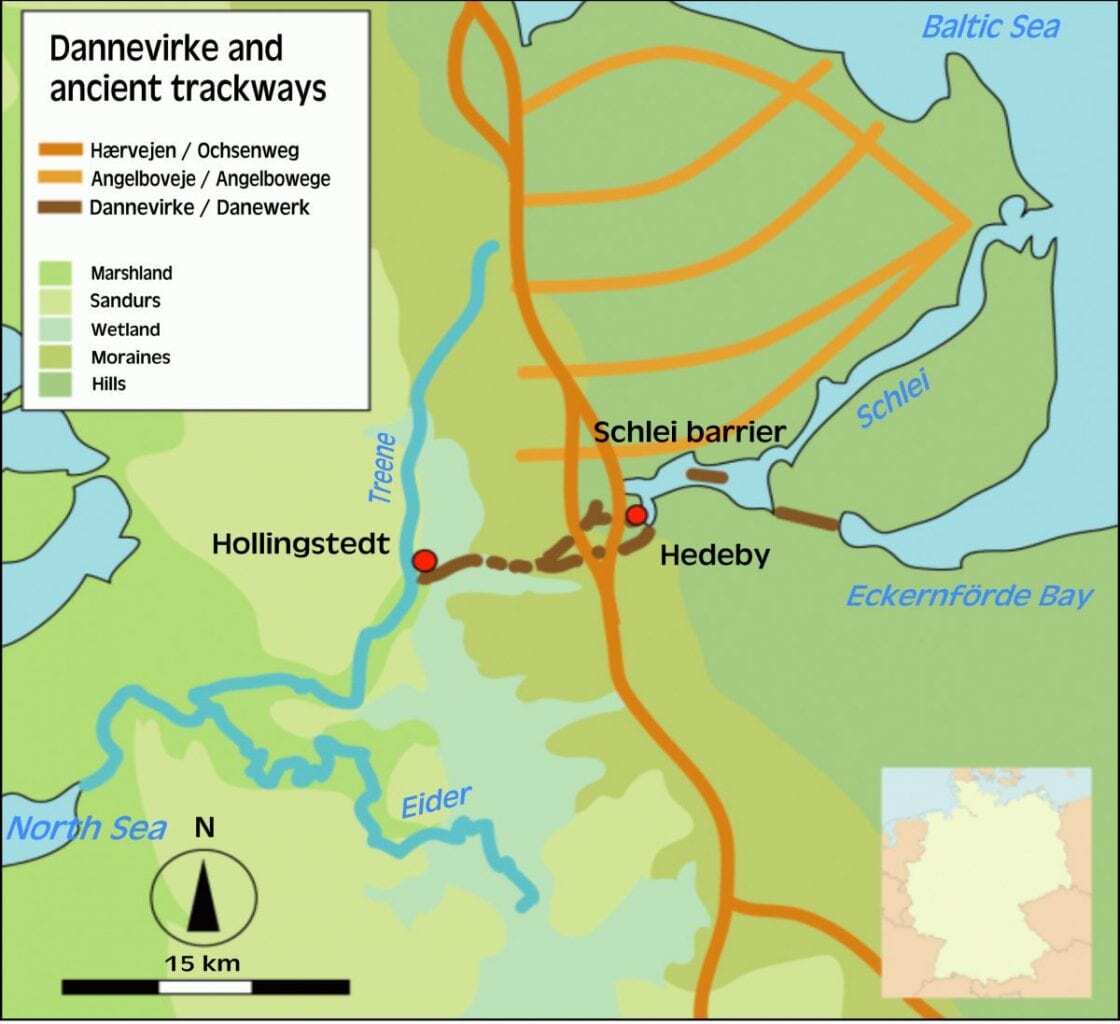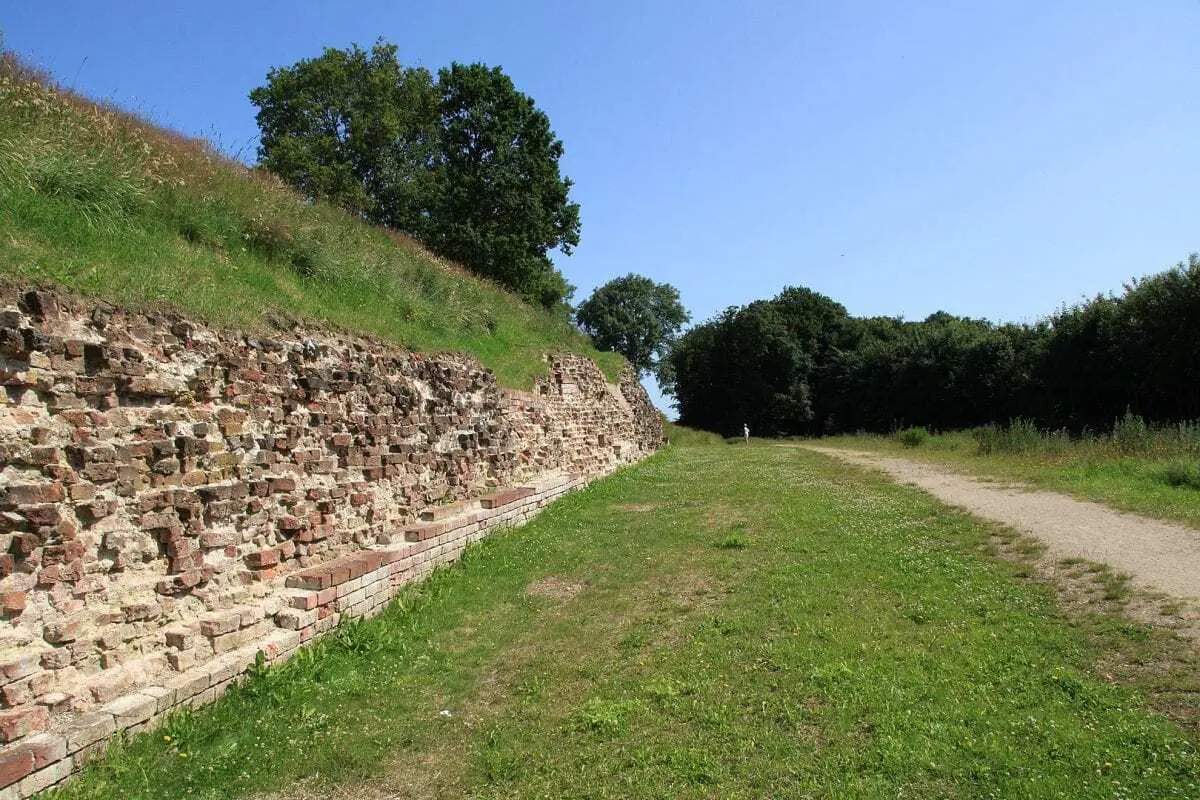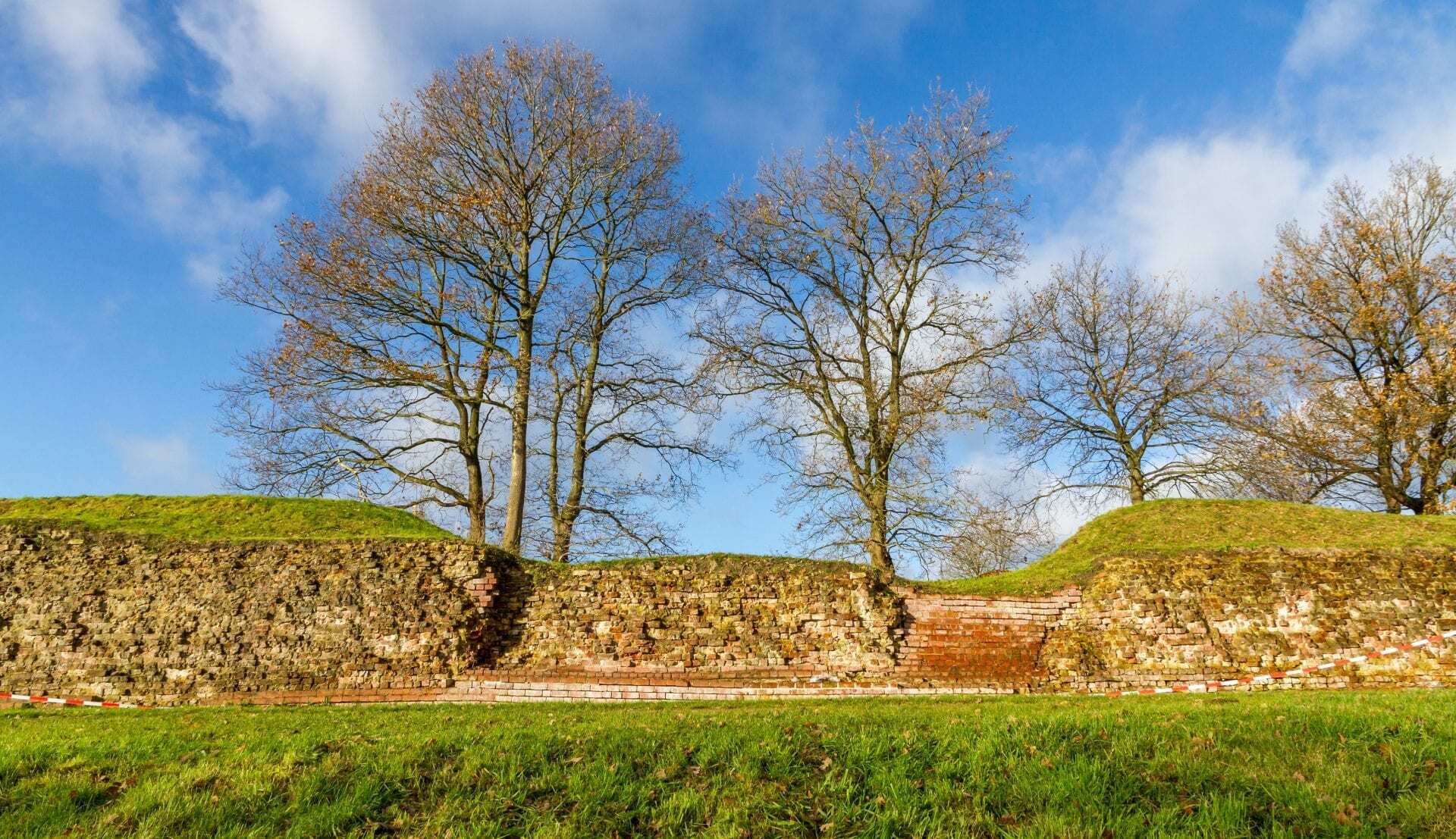The Danevirke is system of large defensive earthworks and walls that stretches across the neck of the Cimbrian peninsula in Schleswig-Holstein, Germany.
The defences run for 30km (19 miles), starting at the Viking trading settlement of Hedeby near Schleswig on the Baltic Sea coast in the east, to the marshes around Hollingstedt on the River Trene, with a height varying between 3.6 and 6 metres (12 and 20 ft).
According to written sources, work on the Danevirke was started by the Danish King Gudfred in 808AD in fear of an invasion by the Franks. He supposedly built the wall to defend his kingdom, creating a physical barrier separating the Jutland peninsula from the northern extent of the Frankish empire.
This has since been contradicted by archaeological evidence that suggests that they were first constructed by Danes during the Nordic Iron Age at some point before 500AD and saw later additions during Denmark’s Viking Age.
Excavations in 1969–75 established, with the help of dendrochronology, that the main structure of the Danevirke was built in multiple phases between AD 737 and 968 by notable Danish Kings such as Angantyr, Siegfried, Guðfrið and Harald Bluetooth.

During the Middle Ages, the Danevirke was further reinforced with defensive palisades and masonry, becoming a secure gathering point for raids against the neighbouring Slavs of the South Baltic.
The 12th century King, Valdemar the Great strengthened sections of the Danevirke further by adding a 7-m high wall of stones in mortar on a granite boulder base, propped up with buttresses and covered with tiles (these fortified sections consequently became known in Danish as Valdemarsmuren or Valdemar’s wall).

The Danevirke began to lose its purpose in the 14th century, owing both to the expense of manning it and to the development of ballistas, trebuchets, and similar siege engines. After centuries of abandonment and decay, the Danevirke fortifications were again partially restored, strengthened, and equipped with artillery installations in 1850 and 1861 during the Second War of Schleswig where Denmark fought the Kingdom of Prussia and the Austrian Empire.
Following the Allied invasion of Normandy during World War II, the Wehrmacht feared that a second Allied invasion might take place through Denmark creating another front. The Nazis planned to convert the Danevirke into an anti-tank trench but were persuaded otherwise by Danish archaeologist Søren Telling who convinced SS chief Heinrich Himmler that the walls were an important remnant of “Aryan civilization”.
In 2018, the Danevirke Archaeological Border Complex was designated a UNESCO World Heritage Site.
Header Image Credit :





